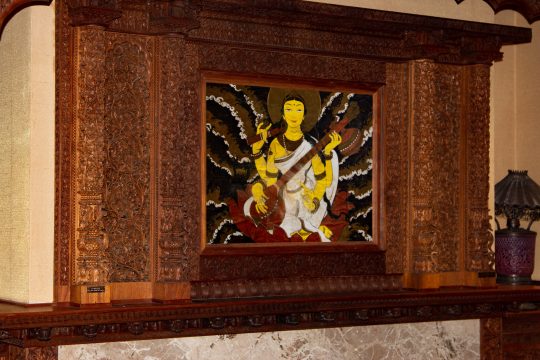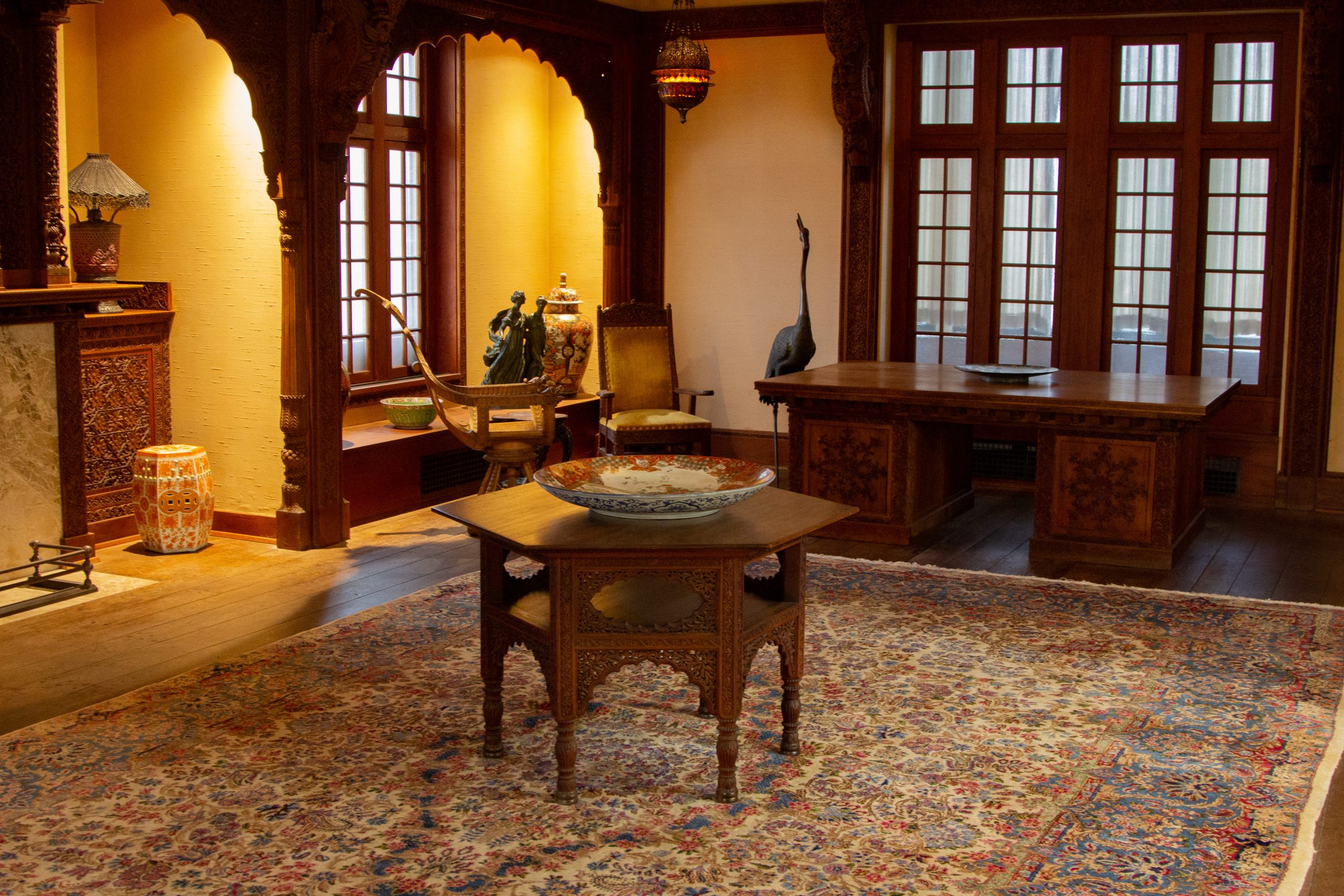Lawrence is actively working to preserve its Teakwood Room housed in Alice G. Chapman Hall, according to Beth A. Zinsli, Curator of Wriston Art Galleries, Assistant Professor of Art History and Director of the Museum Studies Interdisciplinary Area.
As teakwood, which accounts for the majority of the furniture in the room, is a rare item native to India, Zinsli deemed it as crucial to provide the proper care and attention for the room with a preservation assistance grant. This wood is expensive, highly regarded due to its beauty and takes decades to reach the adequate maturity level to be converted into furniture. Therefore, it has been a staple at Lawrence since the 19th century.
Through the preservation assistance grant, three art conservators from the Midwest Art Conservation Center, located in Minneapolis, visited Lawrence in early October and conducted a complete assessment of the room.
In their assessment, the conservators carried out tasks such as environmental monitoring to gauge the room’s condition and deemed it as satisfactory; however, they have yet to release their report regarding specific objects in the room. Zinsli noted that this object-oriented report will assign a priority to each of the items — such as the crafted arches, Tiffany glass lamps, vases, wall panels and sculptures — in the room to determine which items require immediate attention, care and maintenance.
The comprehensive report Zinsli receives from the conservators in early 2022 will determine the next steps in the process. Based on what the conservators outline as necessary to take care of, she plans to apply for another grant to address the conservation tasks and cleanings listed by the conservators.
The most important aspect of this environmental evaluation, per Zinsli, is for the team to assess how the current condition of the room is affecting the teakwood. As teakwood does not grow naturally in the United States, it is vital that elements such as humidity and temperature are tracked and adjusted accordingly to ensure the material will not be negatively impacted by these factors.

Features such as the humidity and temperature of the room being incompatible with the teakwood will prompt Zinsli to procure a humidifier or dehumidifier to combat this issue.
Beyond the effort to conserve the room, Zinsli highlights that the grants aimed towards its protection also have the goal of ensuring it exists as a more accessible space on campus. The appropriate and active upkeep of the room will allow there to be more confidence in opening the space to others: in turn, enabling more students to have an awareness of the room and its importance. The question of whether it can function as a study space or a more common reception area is a concern to be addressed throughout the conservation process.
“We want to have a balance where we’re preserving it and taking care of it,” said Erin Chudacoff, Executive Director of Donor Engagement, “but we also want to have people know it’s there and be able to visit and share it.”
In the mission to spread awareness of the room and share it with a wider community, Chudacoff mentions the potential of having it join the Wriston collection.
Zinsli also states the desire to put the Teakwood Room on Google arts and culture, where 3D showcases of various culturally significant works are up loaded. With this, people could virtually visit the room, look up at the ceiling and zoom in closely on objects such as the Tiffany lamps and their orange glow.
These conservation efforts speak to the centuries’ worth of history the Teakwood Room is entrenched in. The Teakwood Room was commissioned in the late 19th century by Alice G. Chapman, a major benefactor of Milwaukee-Downer College for Women, which merged with Lawrence in 1964. When she was older, Chapman donated all the assets of the room to Milwaukee-Downer College.
According to Zinsli, Lockwood de Forest, an American painter and interior designer, featured carved pieces of teakwood and presented his creations at the Chicago World’s Fair of 1892. Alice G. Chapman then contracted De Forest to make her similar teakwood crafts and he had artists in India carve the teakwood to the exact specifications of the room in her home where she wanted it.
Zinsli notes that Chapman’s commissioning of Lockwood De Forest’s work illuminates what was happening in the arts and crafts movements in the US and what Indian artists were doing in the subcontinent: working with teakwood.
An excerpt from the 1968 Appleton Post-Crescent, provided by Chudacoff, details that Chapman wanted to be sure that even after her death the room would continue to give and invite beauty.
“It represents three distinct moments in history,” Zinsli said. “When it was in Alice G. Chapman’s house, when it was a part of Milwaukee-Downer college and its existence as a part of Lawrence.”

